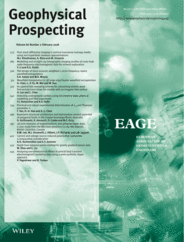
Full text loading...
A thorough and complete understanding of the structural geology and evolution of the Cooper‐Eromanga Basin has been hampered by low‐resolution seismic data that becomes particularly difficult to interpret below the thick Permian coal measures. As a result, researchers are tentative to interpret the basement fault architecture within the basin, which is largely undefined. To provide a better understanding of the basement fault geometry, all available two‐dimensional seismic lines together with 12 three‐dimensional seismic surveys were structurally interpreted with assistance from seismic attribute analysis. The Upper Cretaceous Cadna‐owie Formation and top Permian reflectors were analysed using a common seismic attribute technique (incoherency) that was used to infer the presence of faults that may have otherwise been overlooked. Detailed basement fault maps for each seismic survey were constructed and used in conjunction with two‐dimensional seismic data interpretation to produce a regional basement fault map. Large north‐northeast–south‐southwest‐striking sinistral strike–slip faults were identified within the Patchawarra Trough appearing to splay from the main northeast–southwest‐striking ridge. These sinistral north‐northeast–south‐southwest‐striking faults, together with field‐scale southeast–northwest‐striking dextral strike–slip faults, are optimally oriented to have potentially developed as a conjugated fault set under a south‐southeast–north‐northwest‐oriented strike–slip stress regime. Geomechanical modelling for a regionally extensive system of Cretaceous polygonal faults was performed to calculate the Leakage Factor and Dilation Tendency of individual faults. Faults that extend into Lower Cretaceous oil‐rich reservoirs with strikes of between 060°N and 140°N and a high to near‐vertical dip angle were identified to most likely be acting as conduits for the tertiary migration of hydrocarbons from known Lower Cretaceous hydrocarbon reservoirs into shallow Cretaceous sediments. This research provides valuable information on the regional basement fault architecture and a more detailed exploration target for the Cooper‐Eromanga Basin, which were previously not available in literature.

Article metrics loading...

Full text loading...
References


Data & Media loading...

